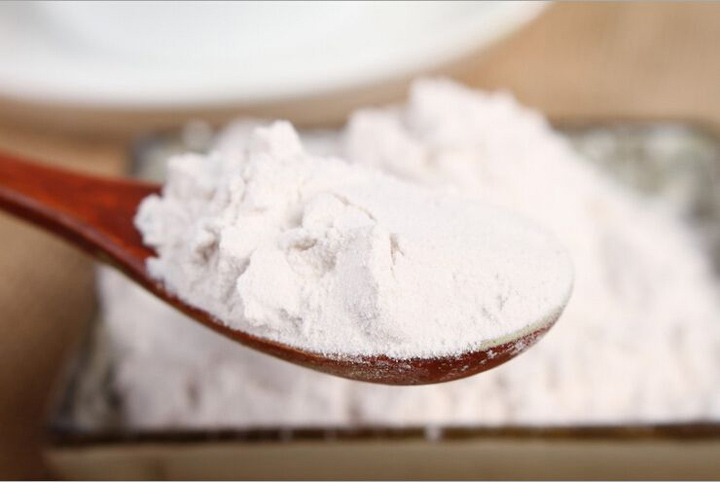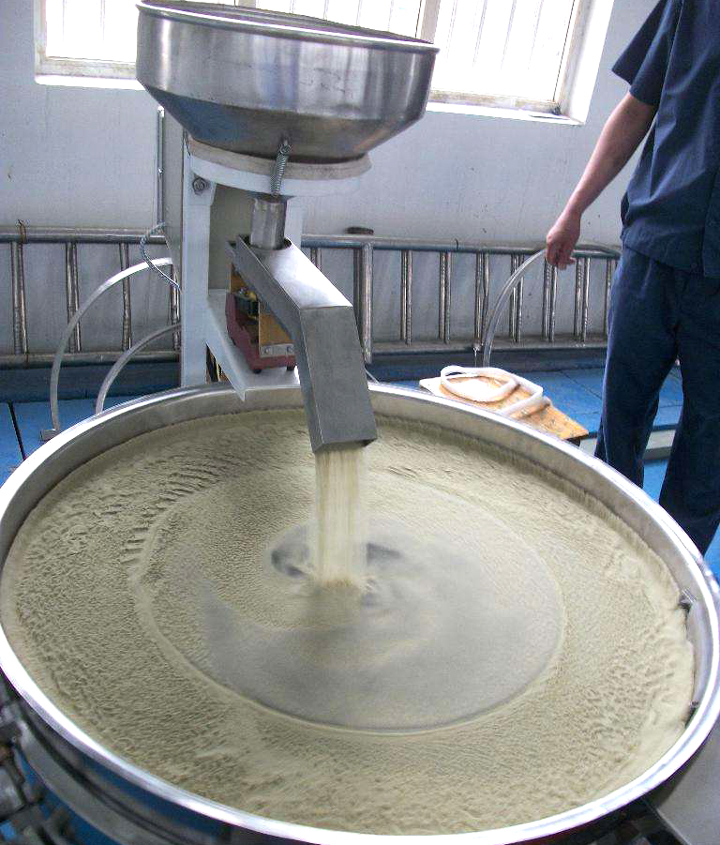Dahanhan Machinery designed and produced an ultrasonic vibrating screen for the problem that fine powder materials are prone to block the screen during the screening process. This vibrating screen solves the problem of strong adsorption, easy agglomeration, high static electricity, high precision, high density and light The problems in the screening industry such as specific gravity make it no longer difficult to screen fine powders, and it is especially suitable for users of high-quality and fine powders. Among them, the ultrasonic vibrating sieve plays a great role in the lotus root starch production project, which greatly improves the inconvenience caused by the traditional process. Let's compare the traditional process of lotus root starch and the ultrasonic vibrating sieve process.

The traditional production process of lotus root starch: put lotus root pulp in a cloth bag, put a cylinder or basin under the bag, rinse the cloth bag with clean water, and stir the lotus root residue in the bag while washing, until the clear water is filtered out.

Processing technology of Vibrating sieve for sieving lotus root starch:
The lotus root raw materials are cleaned, crushed, filtered, de-sand purified, concentrated and refined, dehydrated and dried, and then packaged into finished products. Below we will explain each of them.
Selection of raw materials: The raw materials must be fresh and mature lotus root with neat shape, uniform thickness, normal color, smooth and clean individual surface, and no obvious defects. Such lotus root can ensure the flour yield and starch quality.
Cleaning: It is mainly to clean the sediment on the surface of lotus root, which is the key to the processing of lotus root starch.
Crushing and filtering: The tissue structure of lotus root is destroyed by crushing, so that tiny starch granules can be disintegrated and separated from lotus root smoothly.
Sand removal and purification: mainly to further remove the sediment of the material.

Concentration and refining: This is to concentrate the starch slurry and completely separate the non-starch components in the starch, so that the concentration of starch milk discharged from the latter stage cyclone reaches 23%, so that the whiteness and purity of lotus root starch are up to the standard. .
Dehydration: The concentrated starch slurry still contains a lot of water, which can be removed by a three-leg dewatering machine. Large factories use a scraper centrifuge to remove the water in the material, and then enter the drying section.
Drying: The high-speed hot air flow generated by the air dryer with high heat transfer coefficient, large heat transfer area and short drying time is used to suspend the wet starch in it, and dry it during the air flow process.
Starch cooling and sieving packaging: The temperature of the dried starch is high, and the viscosity of the starch can be ensured after rapid cooling. At this time, the ultrasonic vibrating sieve of lotus root starch comes in handy, and the cooled lotus root starch is sieved and purified by ultrasonic vibrating sieve to remove The sand and debris in lotus root starch can improve the purity and taste of the product.
Address:China,Yanjin county forest park gate to the west 1000 meters north road.